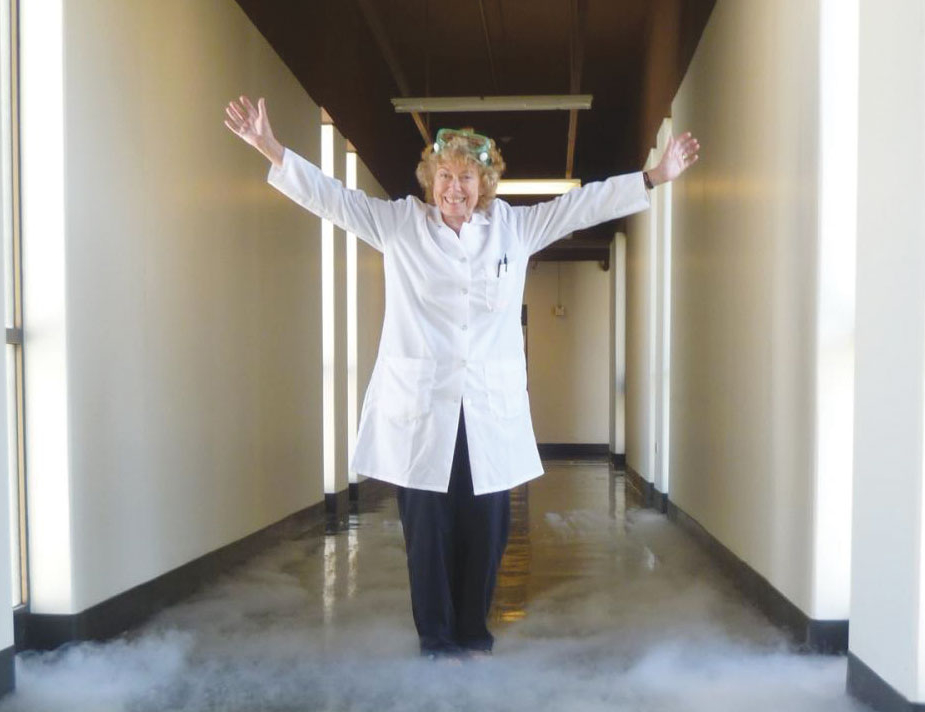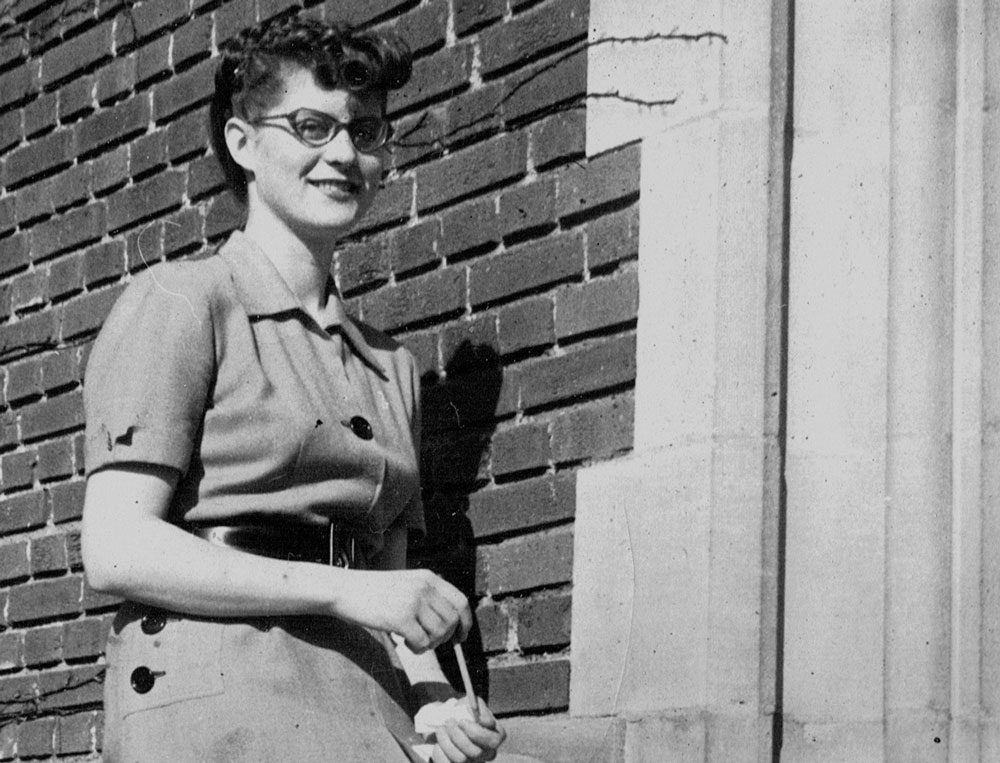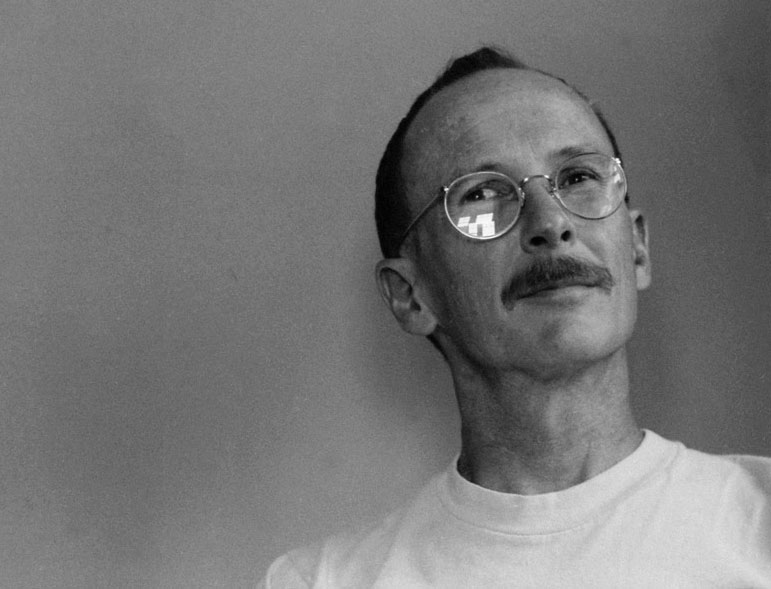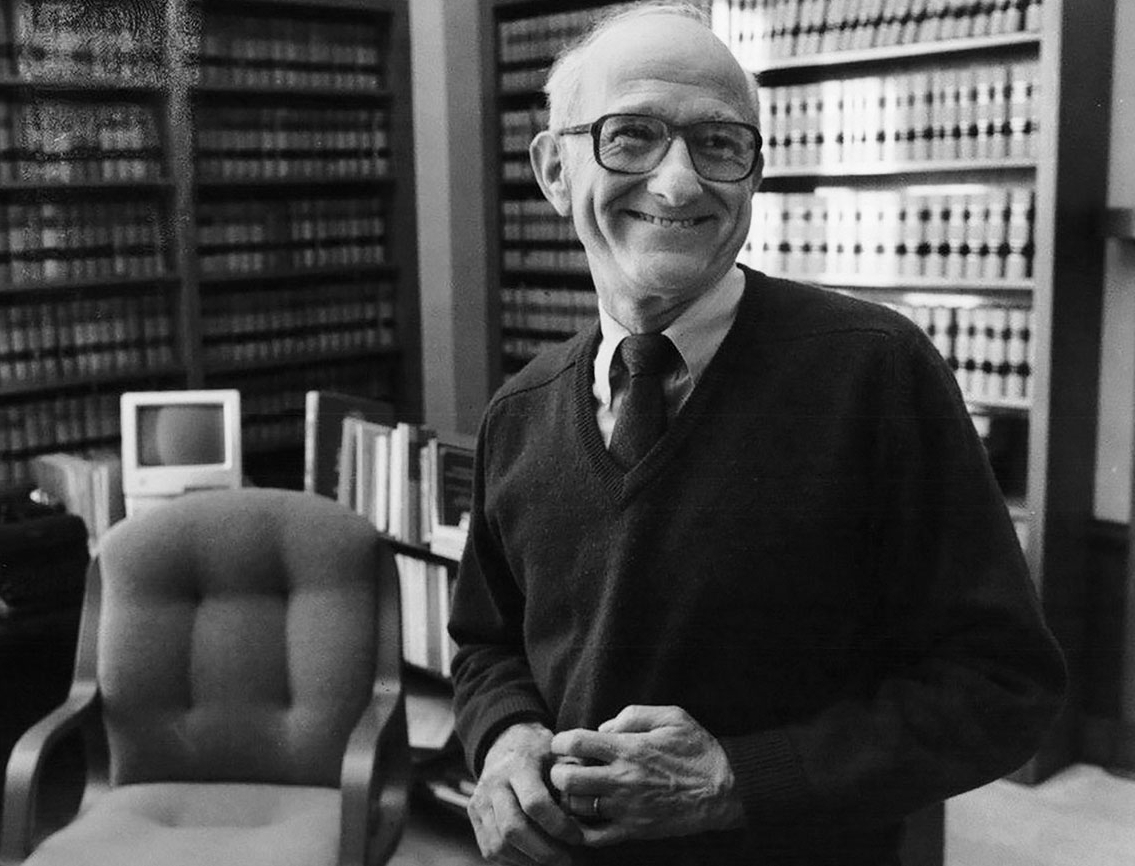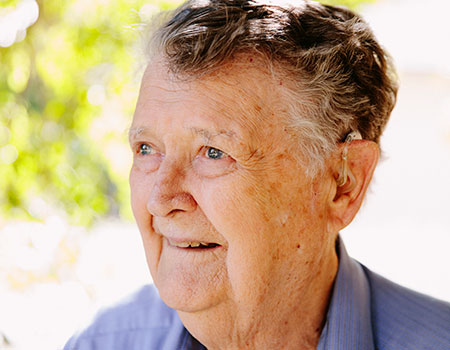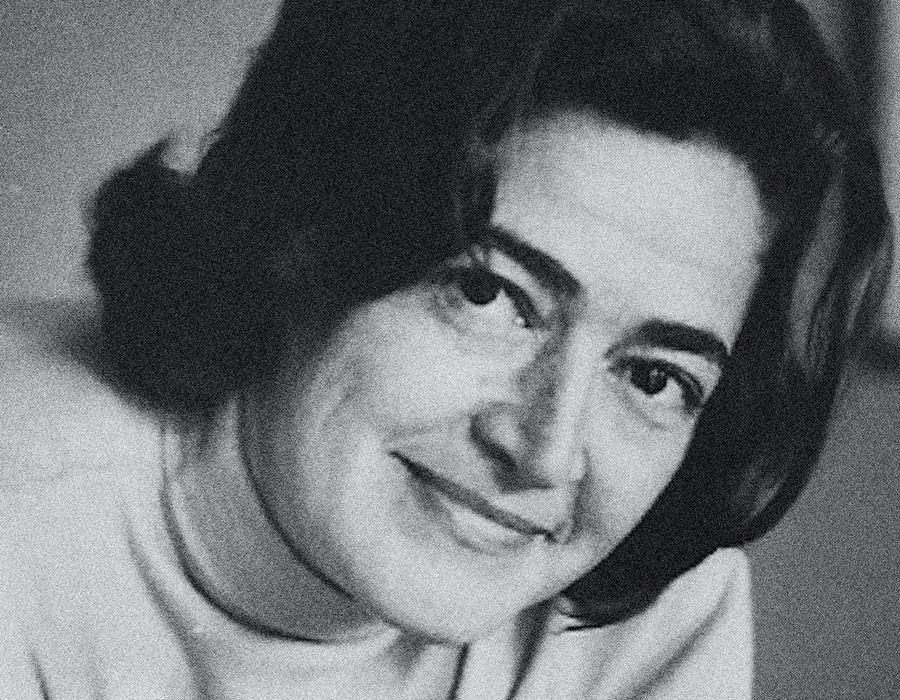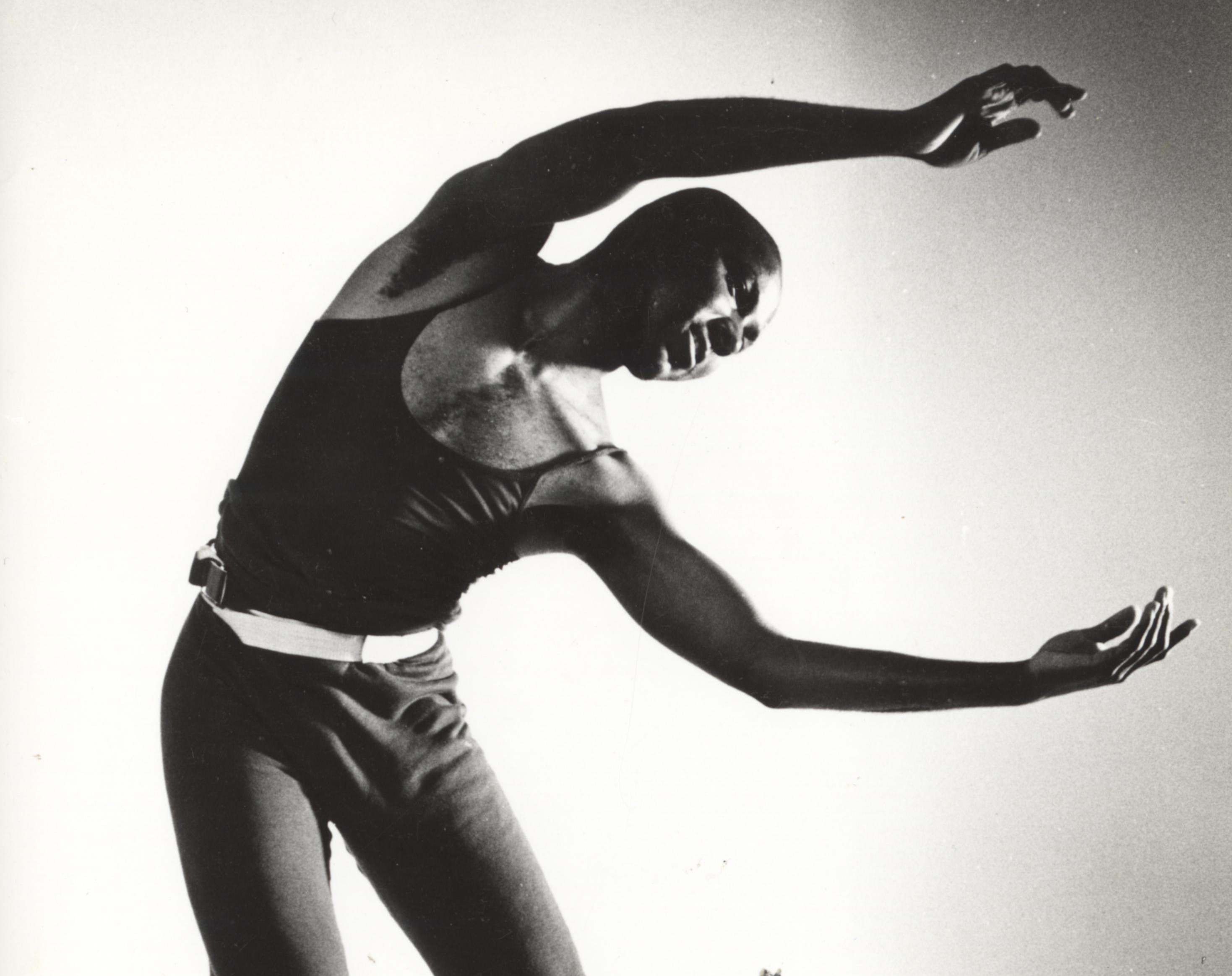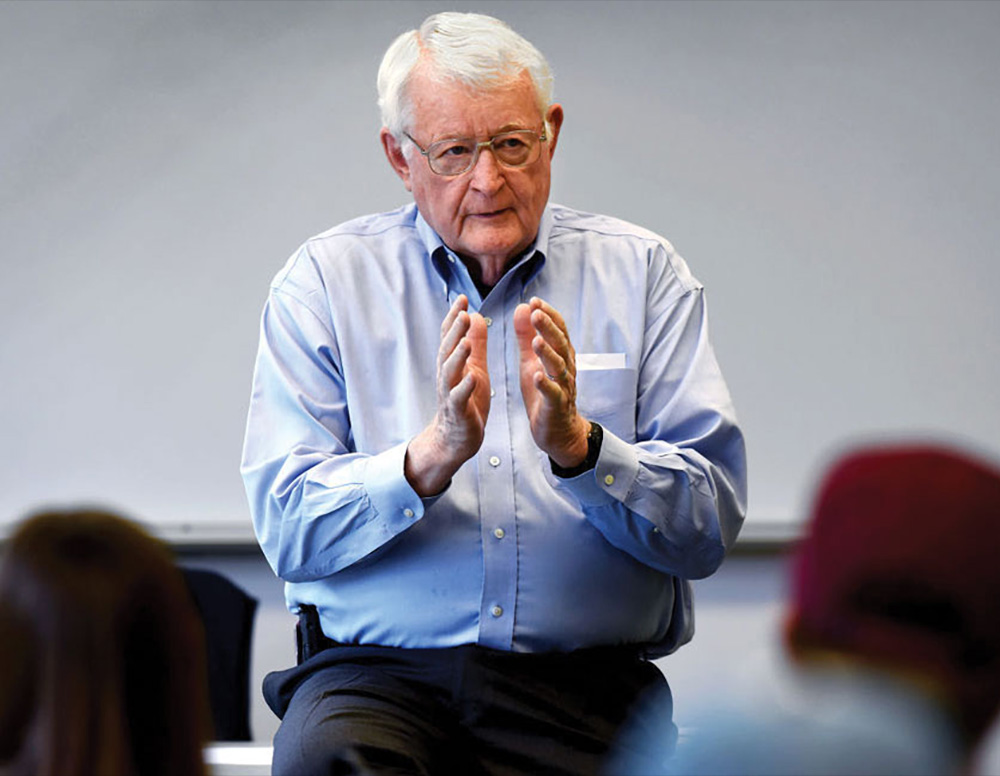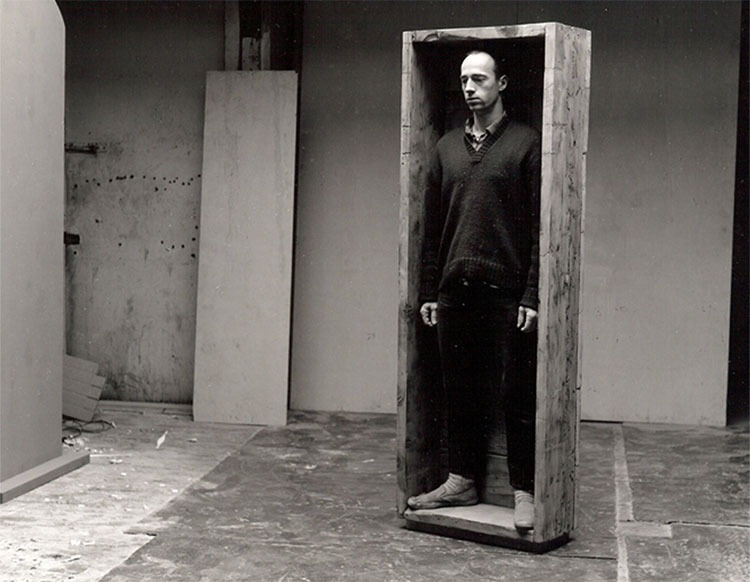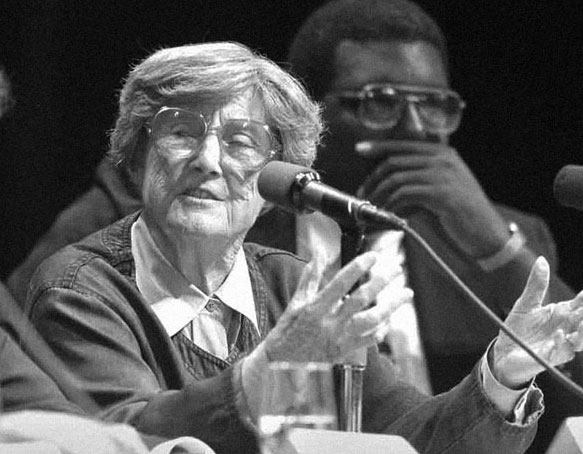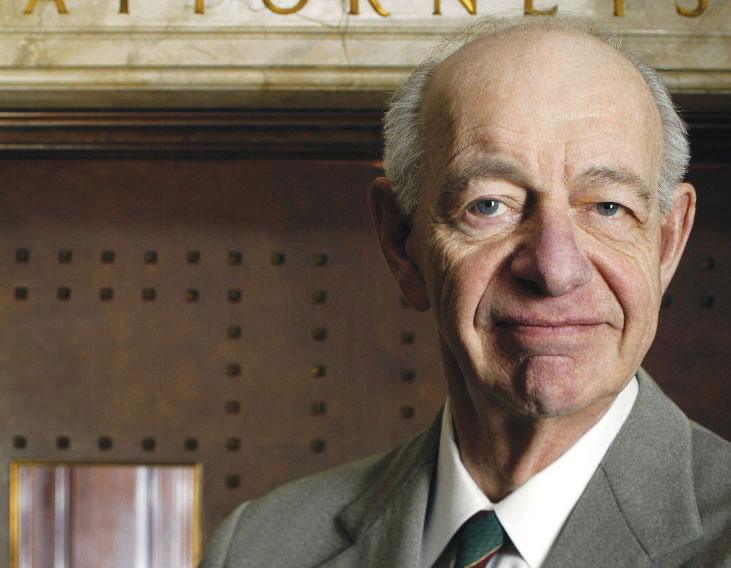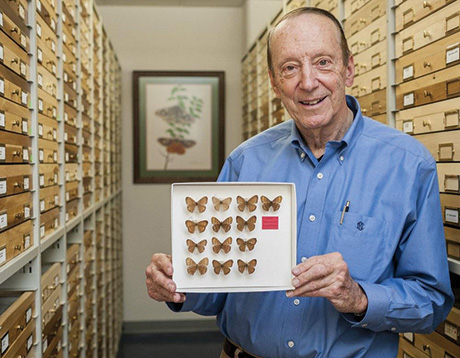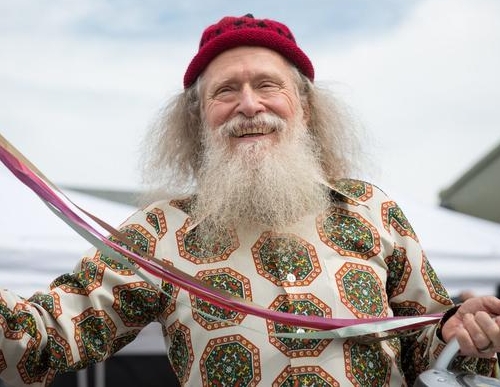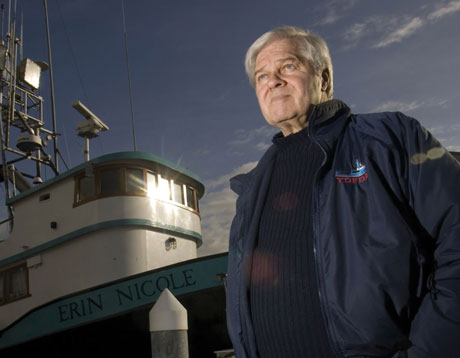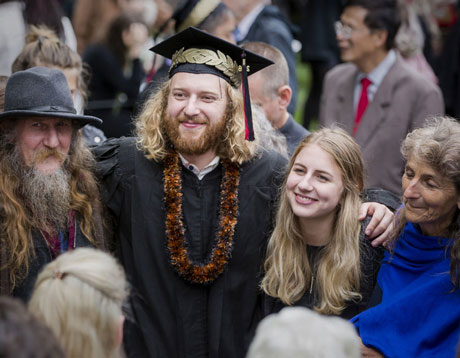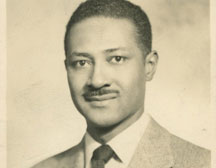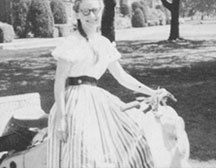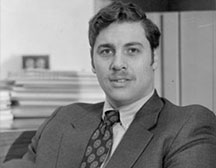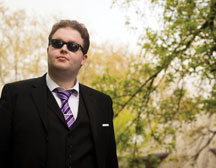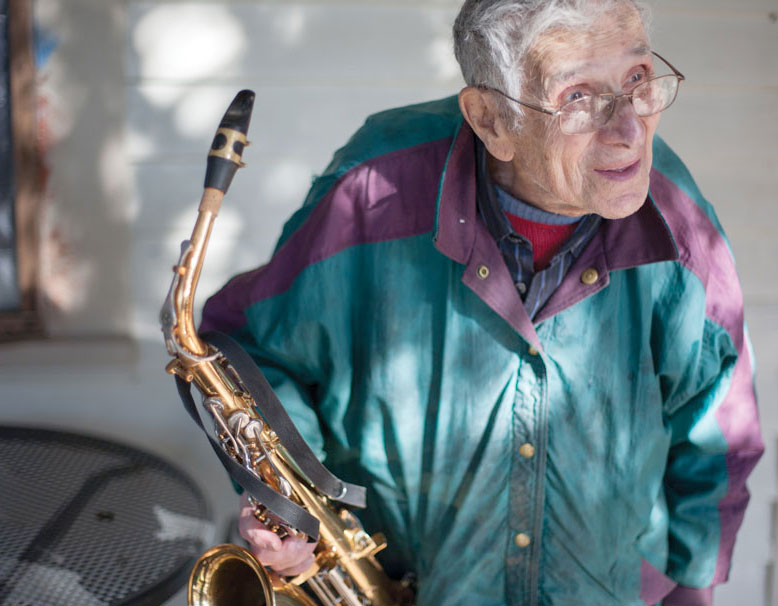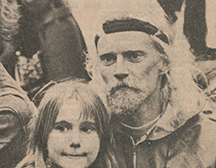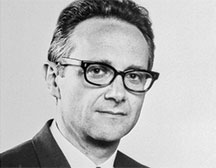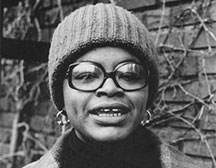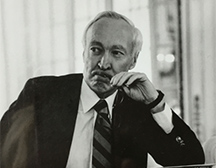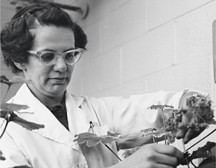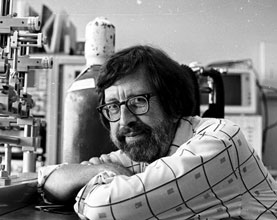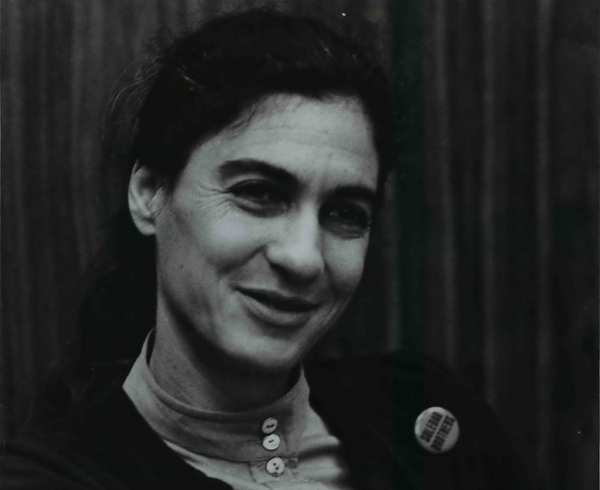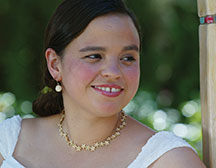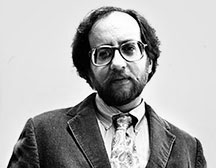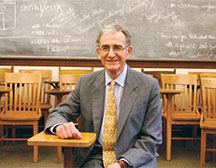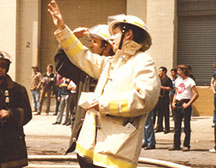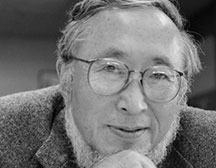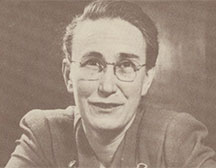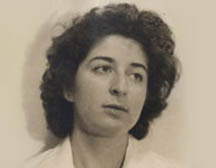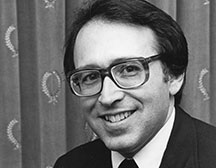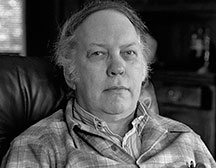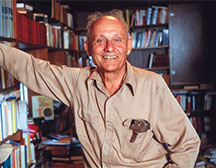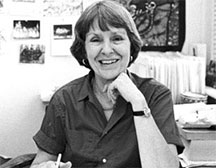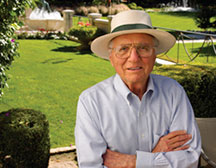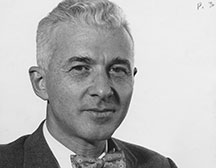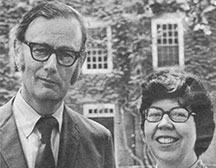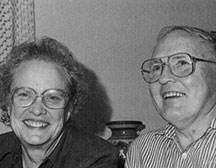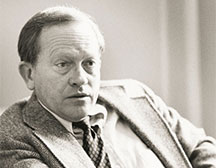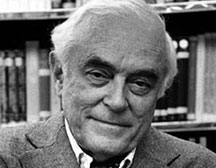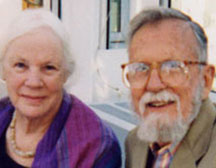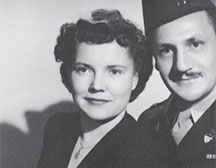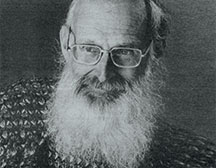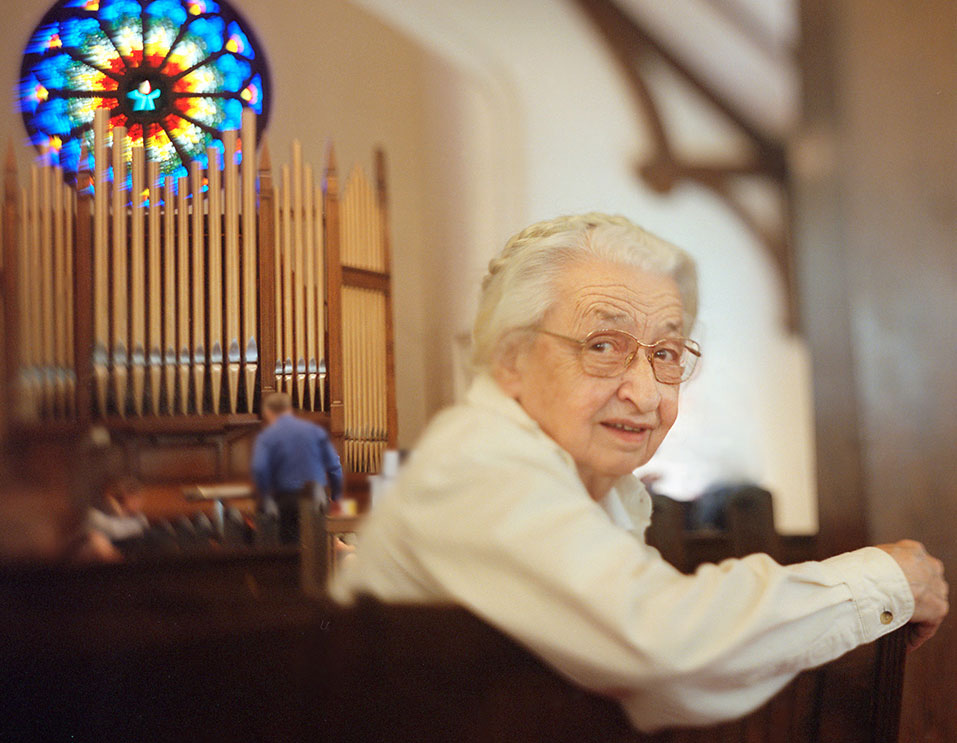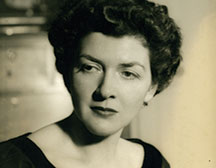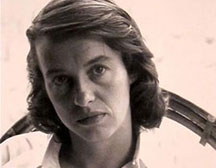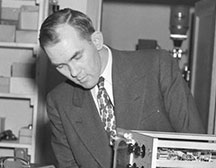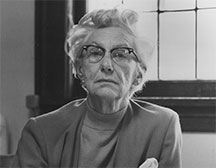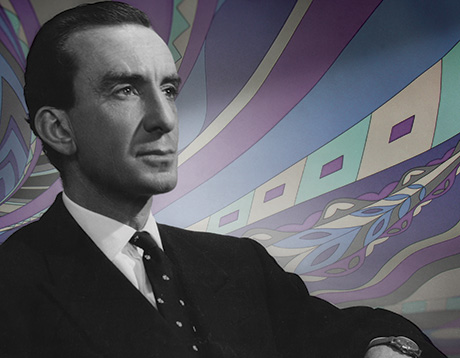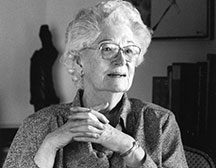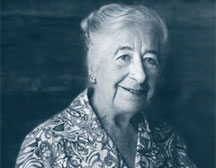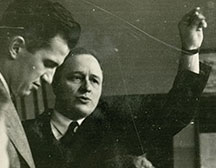Chow Bella
James Beard ’24

By Randall S. Barton
Hailed as the father of the American food movement, James Beard changed American cooking as we know it today.
Gourmet’s restaurant critic, Jay Jacobs, called him “the indisputable pioneer of a gustatory revolution, that … steamrollered its way into the forefront of contemporary American social life.” James was deemed the “Dean of American Cookery,” suggesting he had an academic approach to cooking, eating, and entertainment. At Reed—where he was a student for fewer than two semesters—he never wrote a thesis, but he built a celebrated career on the premise that “the people of the Western European countries ate pretty dull food until the discovery of America.” He decried the decline in seasonal enjoyment of local foods and championed a love for outdoor cooking and eating.
“The tradition of regional eating has been ruined during this century,” James said. “Everyone thinks he must have Maine lobster in Oregon and California asparagus in New York, and so it goes. What a job it is to find a restaurant—and they are rare—where the pleasures of regional food are still respected.” He maintained that eating food fresh out of the sea or garden and eating it after refrigeration are two different experiences; to eat it after it has been frozen and traveled the breadth of the country can only be a travesty.
James was born in 1903 to Mary Elizabeth Beard, a 42-year-old force of nature. He inherited her gustatory bent, as is evident in his memoir, Delights & Prejudices, where he describes his mother as having “an uncanny sense of food and the talent to show others how to prepare it. She loved to cook, eat and talk food more than almost anyone else I have known.”
In addition to this nature/nurture combo, James was born with an ability to recall food flavors and sensations without benefit of physical stimuli—often many years after having originally consumed the food.“The ability to recall a taste sensation, which I think of as a ‘taste memory,’ is a God-given talent, akin to perfect pitch, which makes your life richer if you possess it,” he wrote.
Mary owned and operated a hotel in downtown Portland before James was born. After selling it, she built a house in Southeast Portland and ran her kitchen as if she was still feeding paying guests. Vendors at the great public market that ran along Yamhill Street set aside their best provisions for the persnickety Mrs. Beard. One time when James accompanied his nursemaid to the market, as she took her purchase from the clerk the nursemaid said, “Please charge them to Mrs. Beard.” Blanching, the clerk replied, “For God’s sake, give me that package. If I sent that to her, she’d kill me.”
It was the Edwardian era and consumption of fresh foods was governed by short, local growing seasons. Stoutness was an indicator of success, but there was a growing interest in eating less fat and cholesterol and the nascence of the 20th century’s mania for diets. Science was king and a new one called “domestic science” took on the mission of making the kitchen a tidy laboratory, minimizing the time a housewife spent in the kitchen. But this shift to factory-prepared, processed foods robbed them of their original taste and aroma. The Pure Food and Drug Act of 1906—spurred by public concern over the safety and purity of processed foods—was written in part by giant food processors and resulted in a marketplace controlled by large food corporations.
“Mother would have beaten the poulterer who offered her the poor excuse for turkey we have nowadays,” Beard wrote. “Scientifically plucked, which removes part of the skin and practically all the oil sacs, and frozen in a plastic case, today’s bird has about as much flavor and textures as a piece of asbestos.”
Mary Beard grew potatoes in her backyard and believed that new potatoes should be eaten when they were small. “We ate potatoes the size of small marbles,” James remembered, “and they had a flavor superior to all other potatoes. … Occasionally Mother combined them with the tenderest of new peas from the garden, cooked for just a few minutes in a little water with lettuce leaves and butter.”
Mary contracted with beekeepers so that she might enjoy honey flavored with clover, buckwheat, and wild huckleberry. She and her Chinese cook, Jue-Let, provided James with a Golconda of gastronomic experiences.
“I soon became as precocious and nasty a child as ever inhabited Portland,” he wrote. But James never lacked for friends, either in their neighborhood at Southeast Salmon Street and 21st Avenue, or at their Gearhart beach house where residents of the oceanside enclave smirked as the three pear-shaped Beards—Mama, Papa and young James—picnicked by the shore in their one-piece suits. Food, theatre, and opera (he was taken to see Madama Butterfly when he was five) were the highlights of James’s young life. By the time he finished high school, he had appeared in both school and community theatrical productions, and toured in several productions.
James entered Reed in the fall of 1920 and soon became a big man on campus. The Quest that year is full of references to him. Weighing in at 240 pounds, he anchored the freshman team in the annual tug-of-war match against the sophomore class (the freshmen lost and were pulled into the pond.) He was elected treasurer of the freshman class. He won a prize for his costume when he attended the Halloween party in drag. The Quest gushed over his performance as the Bishop in the opera La Tosca. “Preceded by a long procession of Reed soldiers, choir boys, monks and priests, he entered and paused for a moment to call blessings upon the bowed heads of the Italian peasants gathered within the church. The scene was an impressive one, and tho Beard was given no curtain calls, he was undoubtedly a popular favorite after his initial and final bow.”
But James was also gay. At some point, according to his biographer Robert Clark, he became lovers with male students and a professor, and was subsequently forced to leave. “In mid-March, shortly after finishing production chores on a play called The Yellow Jacket, he was expelled,” wrote Clark. “James, the celebrated wit and rococo Gargantua of the class of ’24, was excised and forgotten.”
Clark’s claim that James was expelled for being gay has proven hard to nail down. James did not mention the episode in his memoirs, and his Reed student records, which might shed light on the question, have not been made available to the public, in accordance with Reed’s policy of protecting student privacy. Despite the lack of documentary evidence, it is fair to assume that proceedings of this nature were often deliberately left undocumented. Whatever the case, he left Reed and began pursuing a life in the footlights.
In 1922, James set off for London to study voice with Gaetano Loria. As James learned a repertory of baritone roles, Loria introduced him to the great restaurants of London. After concluding that opera was not his calling, James moved on to Paris, where he discovered that lively patter and a dinner jacket made him a desirable escort for society women. When his mother fetched him back from Paris, James bounded about the U.S. working in the theatre. He toured in Cyrano de Bergerac and appeared in Othello. For a time, he even acted in Hollywood films, appearing in Cecile B. DeMille’s King of Kings and in Queen Kelly starring Gloria Swanson. But James was too fleshy for leading roles and even bit parts were in short supply.
Abandoning Hollywood in 1929, he returned to Portland, and began acting with the Portland Civic Theater, designing scenery and costumes, and freelancing as an acting coach. He decided to pursue a career directing and teaching theatre, and enrolled at Carnegie Tech. But with the advent of the Great Depression there was little work for newly minted acting coaches and directors. By the late ’30s, James was back in New York City and his funds were running low. But his friends liked his cooking, and he began making the rounds cooking for his supper. In return, he was regularly treated to parties, opera, and the theatre.
Prohibition had ended in 1933 and New York was awash in cocktail parties. James loved the boozing and schmoozing, but he found party food—which he called “doots”—unimaginative and unappealing. In 1939, he opened his own catering company, Hors d’Oeuvres Inc. with a partner. James worked the kitchen while his partner worked the press and in short order they were busy purveying tiny artichokes stuffed with fois gras, cucumbers slices filled with lobster, and Mary Beard’s elegant tea sandwiches made with thin slices of onion on thinly sliced brioche slathered with homemade mayonnaise. “Soon our heavily parsleyed and watercressed trays were known throughout the city,” James said.
Hors d’Oeuvre Inc. lasted only a few years, but with the publication of his first cookbook, Hors d’Oeuvre and Canapés, he found work as a freelance consultant and food writer. Shortly after completing his second cookbook, he was inducted into the Army Air Corps and trained as a cryptographist, but never shipped overseas. Released from the army, he found work setting up USS clubs where merchant marines could, eat, sleep, and socialize while in port.
By the time his third cookbook, Fowl and Game Cooker, came out in 1945, James’s was a bona fide food authority. NBC hired him to star in the first commercial food program televised in America, sponsored by Borden Foods. Called Elsie Presents James Beard in I Love to Eat, the program began with James being introduced by Elsie, a giant cow puppet. The following year, Birds Eye Frozen Foods became the sponsor and Elsie was put out to pasture. Television was in its infancy—few American households actually had television sets—and the program aired for only two years. James continued to consult for restaurants, write food articles, and joined the editorial staff at Gourmet magazine. With the publication of his fourth book, The Fireside Cookbook, in 1949, James was established as America’s foremost authority on food and cooking. He began teaching cooking classes in the mid-’50s.
Around this time, he met James Baum, who was converting properties into luxury dining establishments for Restaurant Associates. Baum and Beard teamed up, with Baum conjuring up the themes while James created the menus and vetted the offerings. They collaborated on some of the legendary restaurants in mid-century New York, including the Forum of the Twelve Caesars and the crown jewel of Baum’s creations—the Four Seasons in the Seagram Building. The concept was that the menu and décor would change quarterly and the food would be what Beard had grown up on, American food. The Four Seasons has been hailed as the birthplace of “the New American Cuisine,” and foreshadowed the Nouvelle Cuisine emphasis on presentation and previously uncombined ingredients. That year, James moved into the four-story townhouse—used as a residence and cooking school—which now houses the James Beard Foundation. In 1975, Beard and Baum collaborated on Windows on the World restaurant in the north tower of the World Trade Center.
For nearly 30 years, James taught cooking classes that emphasized doing, not demonstrating. He disdained over-sauced, showy food. “I like a well-tailored plate of food,” he said, “and I want things to look and taste like what they are. I detest cooking that masks one flavor with another, and I dislike fussy presentations that don’t respect the identity of the ingredients. A tomato is a tomato, not a rose. Noodles are noodles, not birds’ nests or baskets.”
Due to health issues, he was put on a no-salt, low-calorie diet in the mid-’70s, and discovered flavors that previously had eluded him. “Maybe I’ve been missing the truth,” he observed, “the nutty, delicate earthiness of a perfect baked potato.”
In 22 books, magazine articles, television and personal appearances James extolled the secrets of cooking, eating and entertaining.
“Put on a fine show!” he advised. “Like the theater, offering food and hospitality to people is a matter of showmanship, and no matter how simple the performance, unless you do it well, with love and originality, you have a flop on your hands. Whether you are serving one person or a hundred, entertaining at a dinner or cocktail party should be a pleasure, not a chore.”
James returned to Reed in 1976 to receive an honorary degree at Commencement. After President Paul Bragdon gave him the degree, he shared his recipe for brownies and got a standing ovation.
When he died in 1985 at the age of 81, James had not only become the model for the prototypical celebrity chef, he was lionized throughout the culinary world. He left the bulk of his estate to Reed, including his house on 12th Street, his private collection of his own cookbooks, and eventually the royalties from those books. His bequest also provided for the James Beard Scholarship Fund at Reed, supporting students who otherwise could not afford tuition. The 12th Street house was sold to a foundation that maintains it as a showplace for American culinary talent, and bestows annual James Beard Awards for excellence in cuisine, culinary writing, and culinary education. His ashes were scattered on Gearhart Beach and at Tillamook Head.
Reed made a lasting impression on Beard. He maintained lifelong friendships with classmates and came back for his 50th reunion. “He felt very good about Reed,” Portland lawyer (and trustee emeritus) Morris Galen said in 2011, “and was thrilled when he was awarded an honorary degree.” There is no question that James Beard is revered at Reed today. We are proud to recognize him as an alumnus of the college.
comments powered by DisqusFrom the Archives: The Lives they Led

Jeanne Knepper ’69
The First Openly Gay Woman to Be Ordained and Appointed Within the Oregon-Idaho Conference of the United Methodist Church
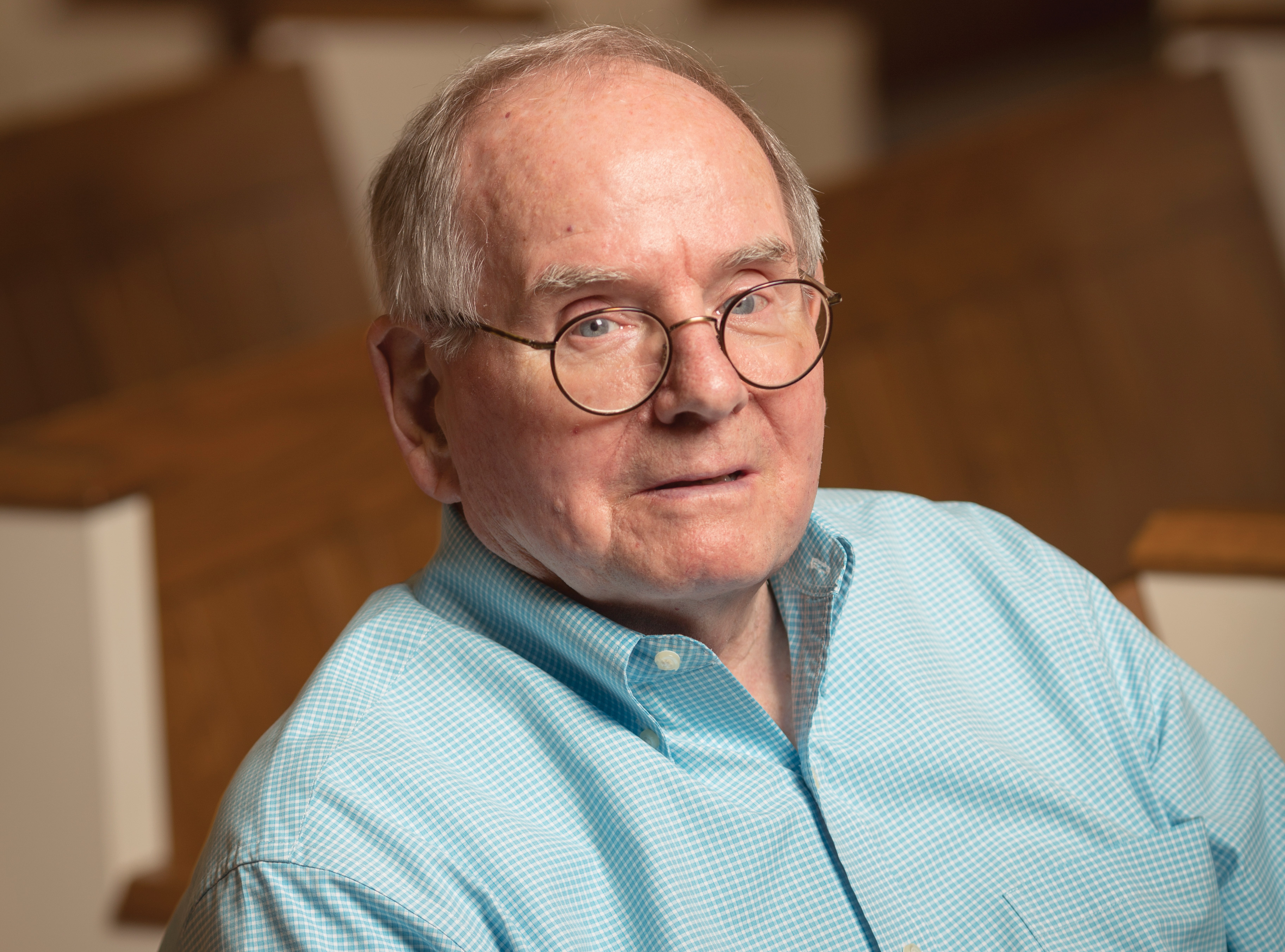
William Haden
As Acting President of Reed, He Strengthened the College's Finances and Alumni Relations
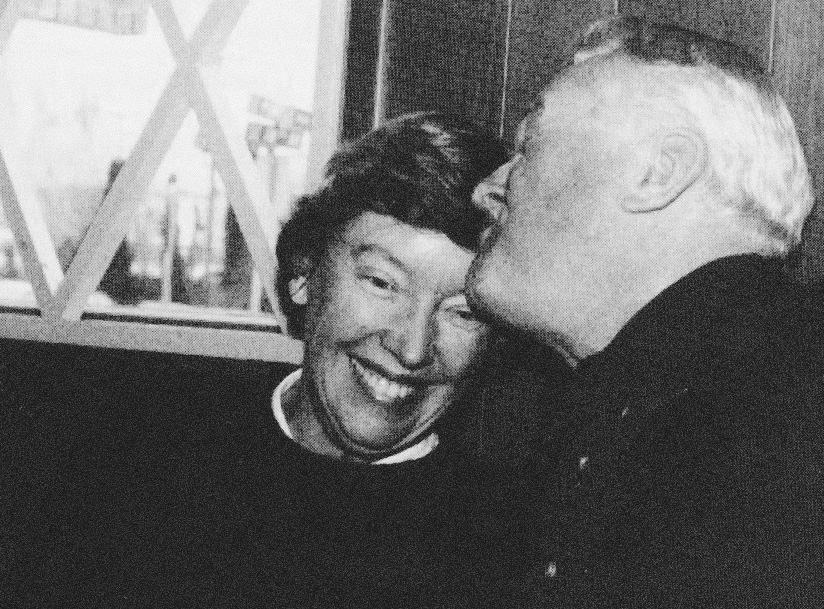
Nancy Horton Bragdon
Reed’s First Lady Whose Warmth and Leadership Were Invaluable During a Turbulent Time

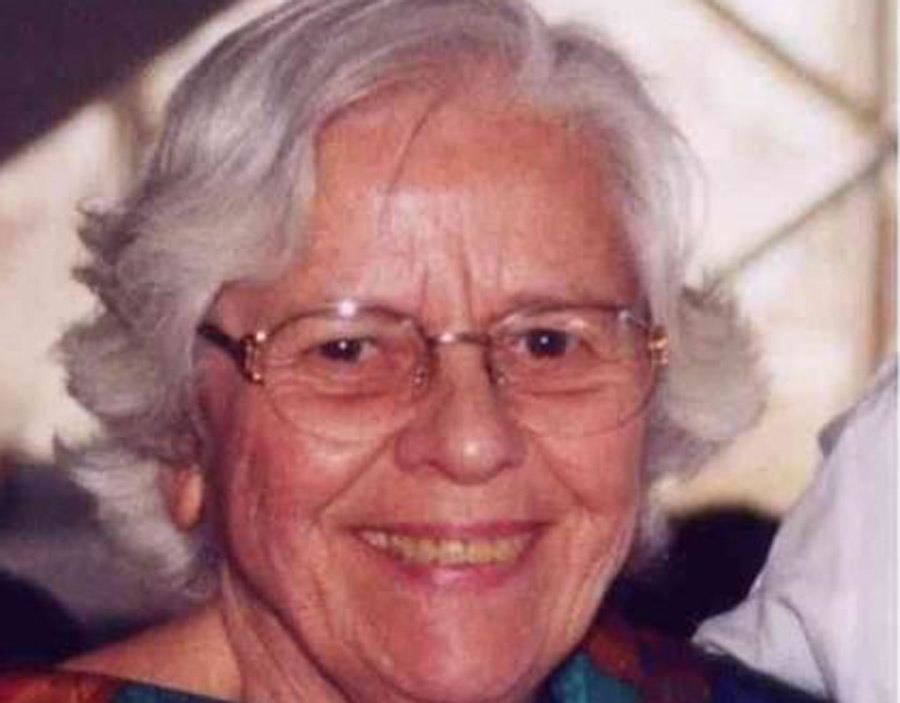
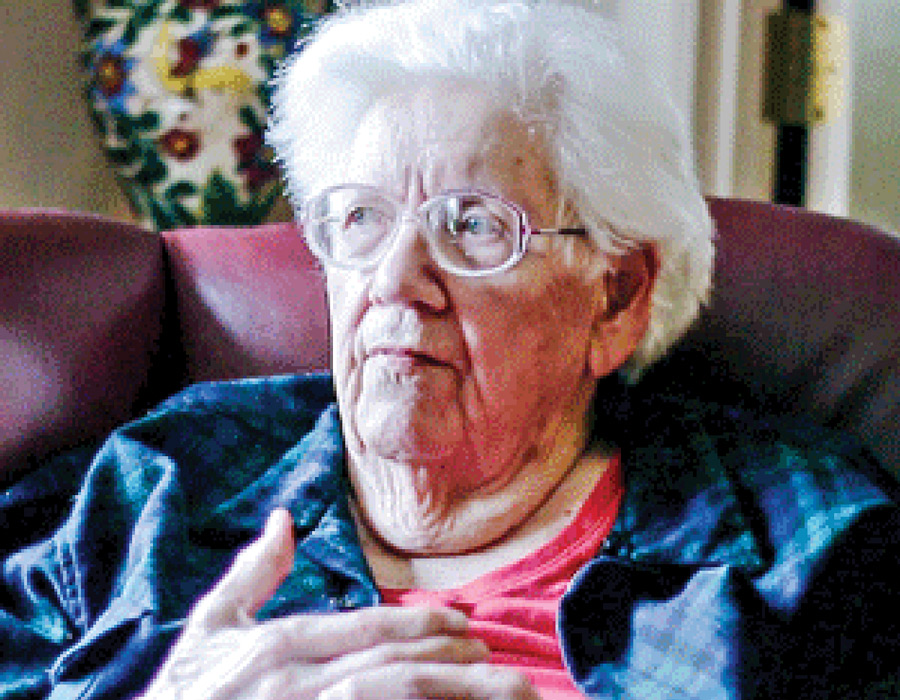
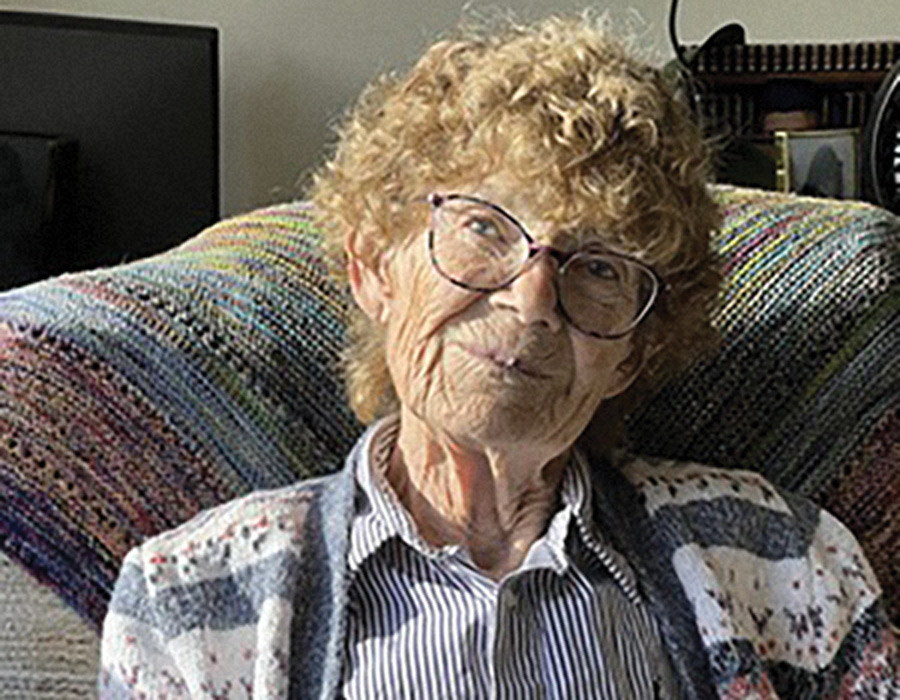
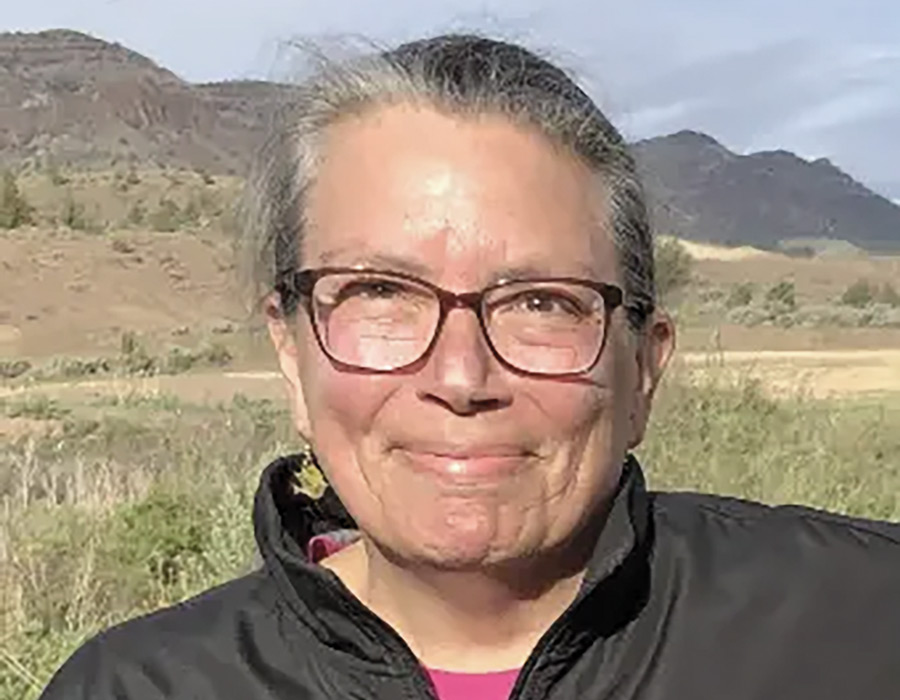
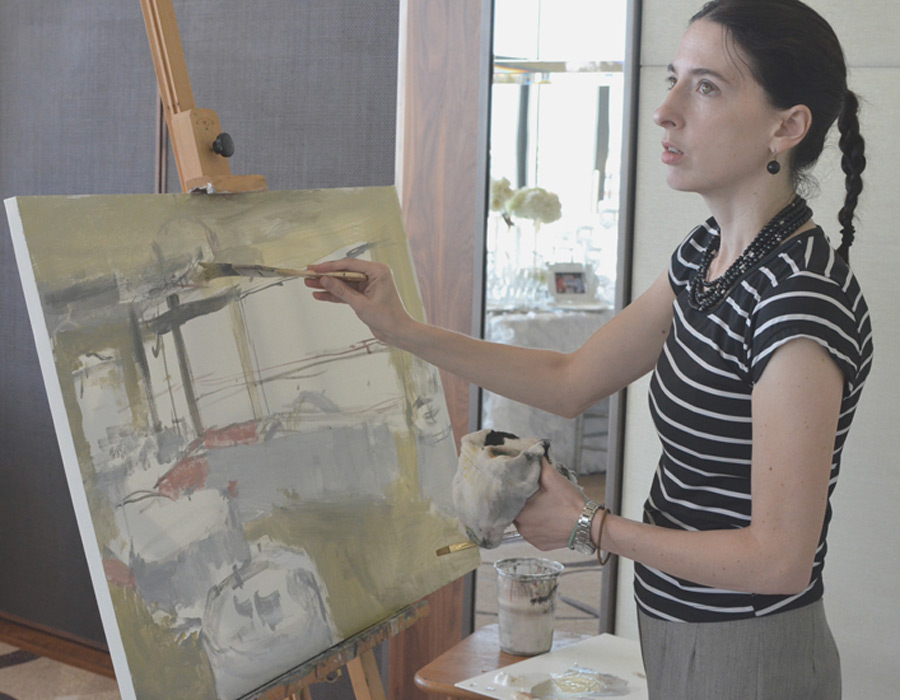


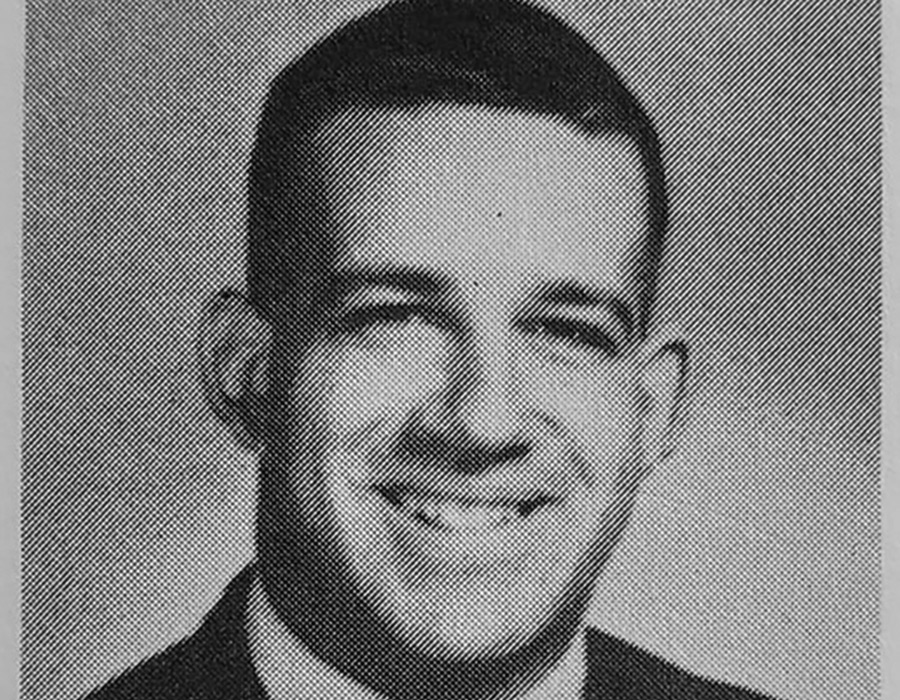
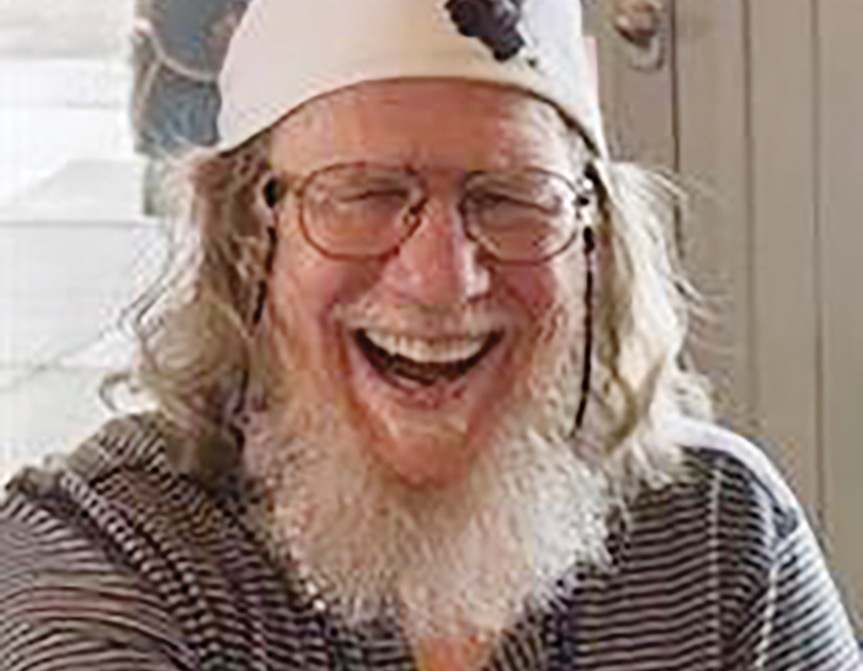

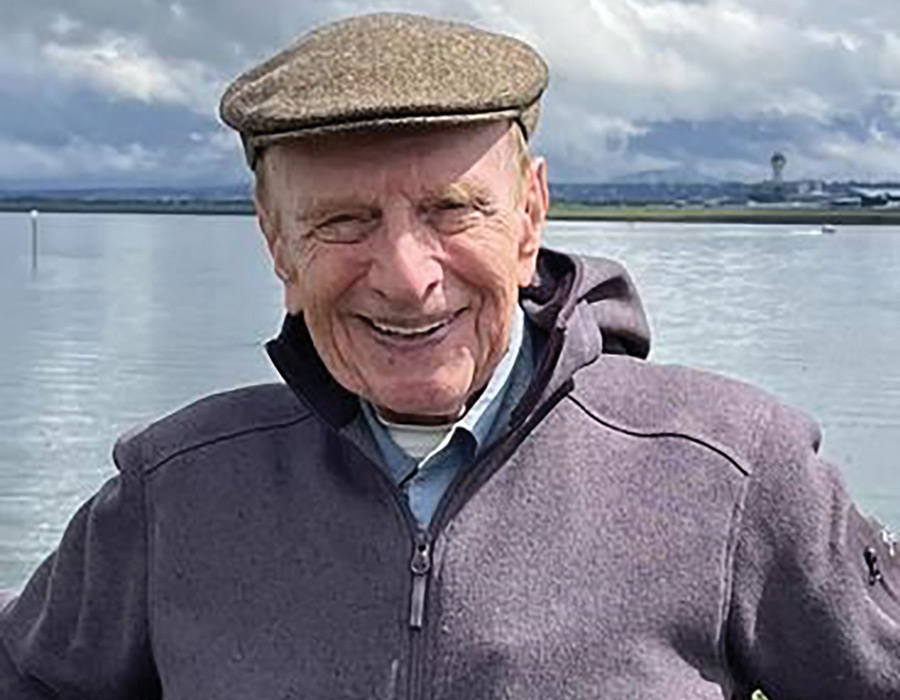
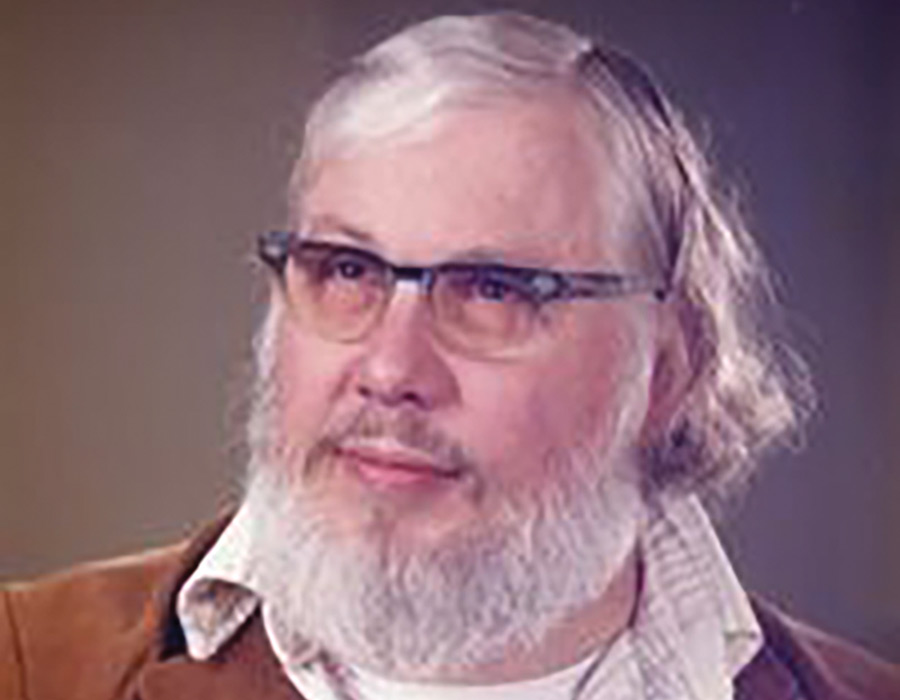
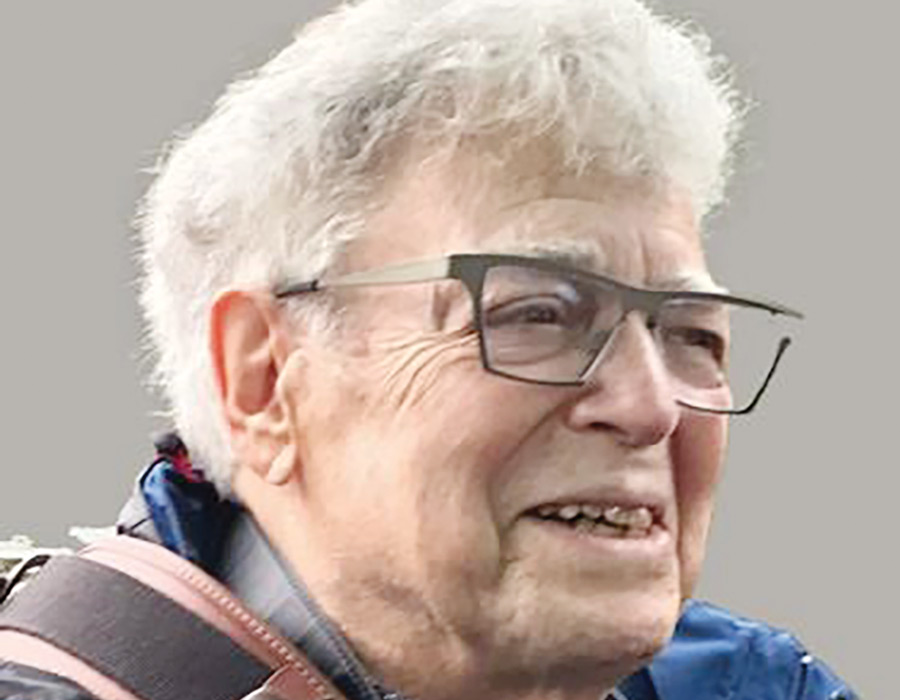
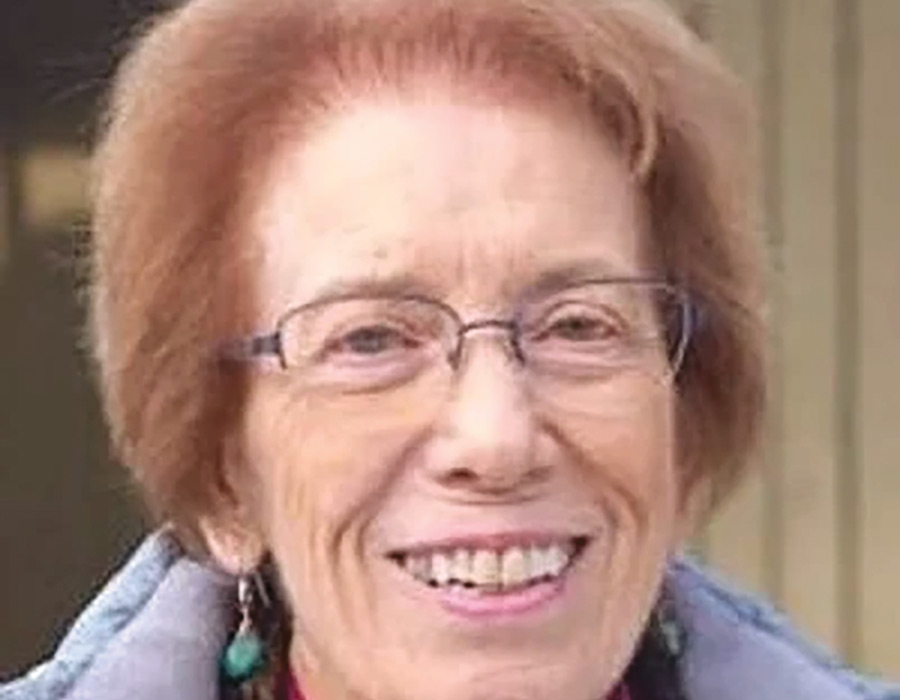
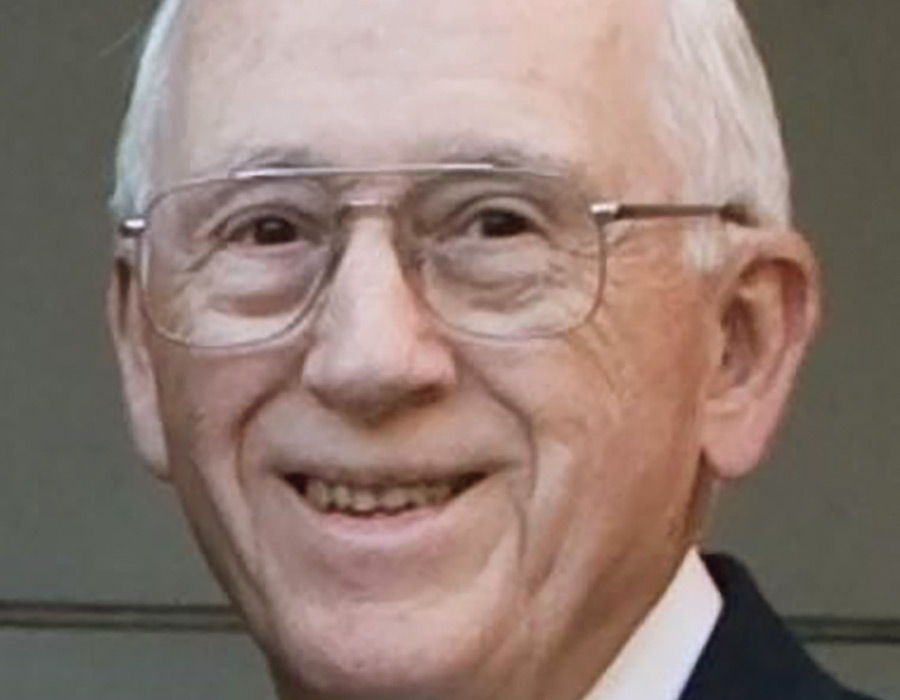

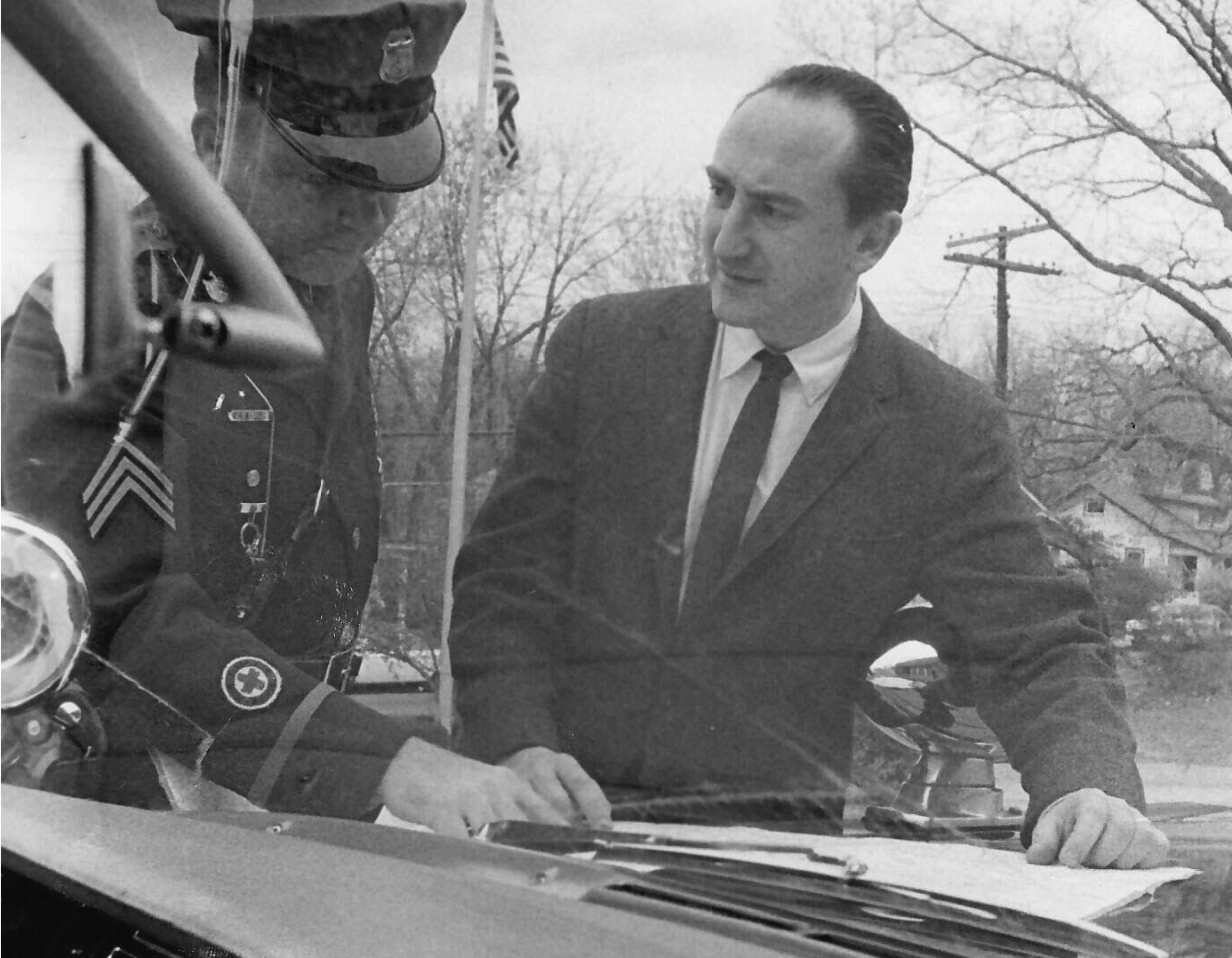

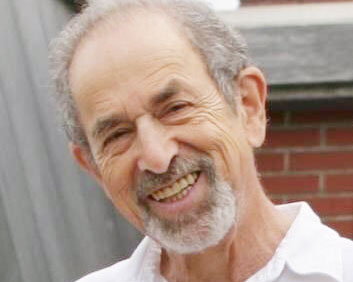
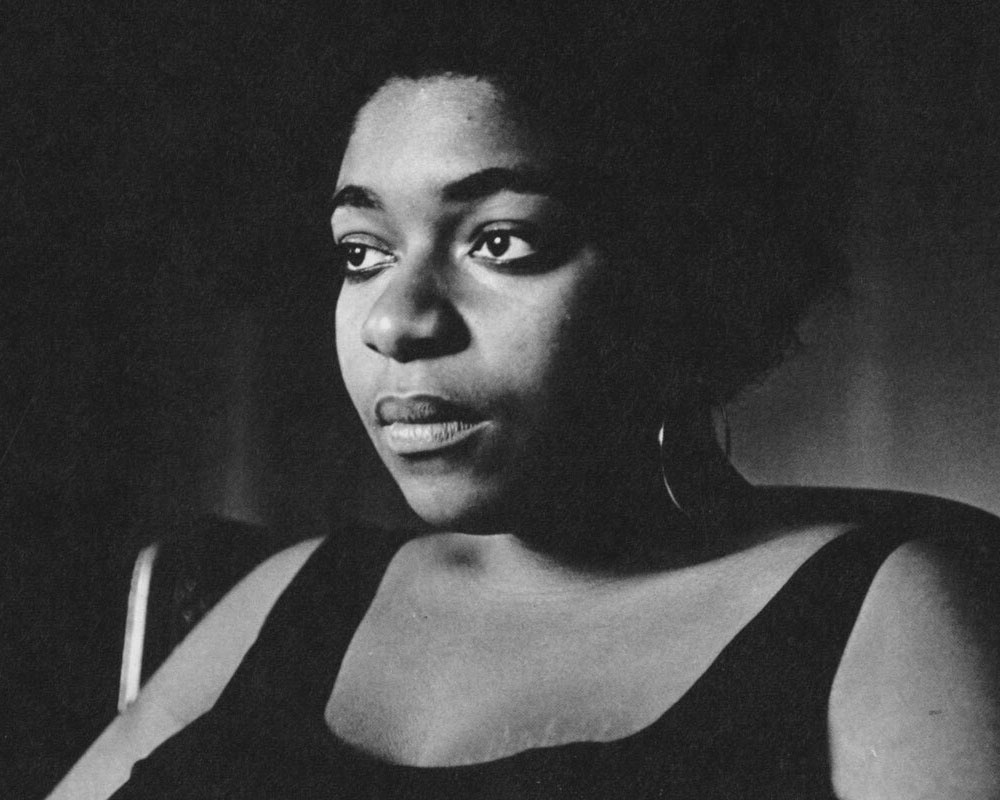
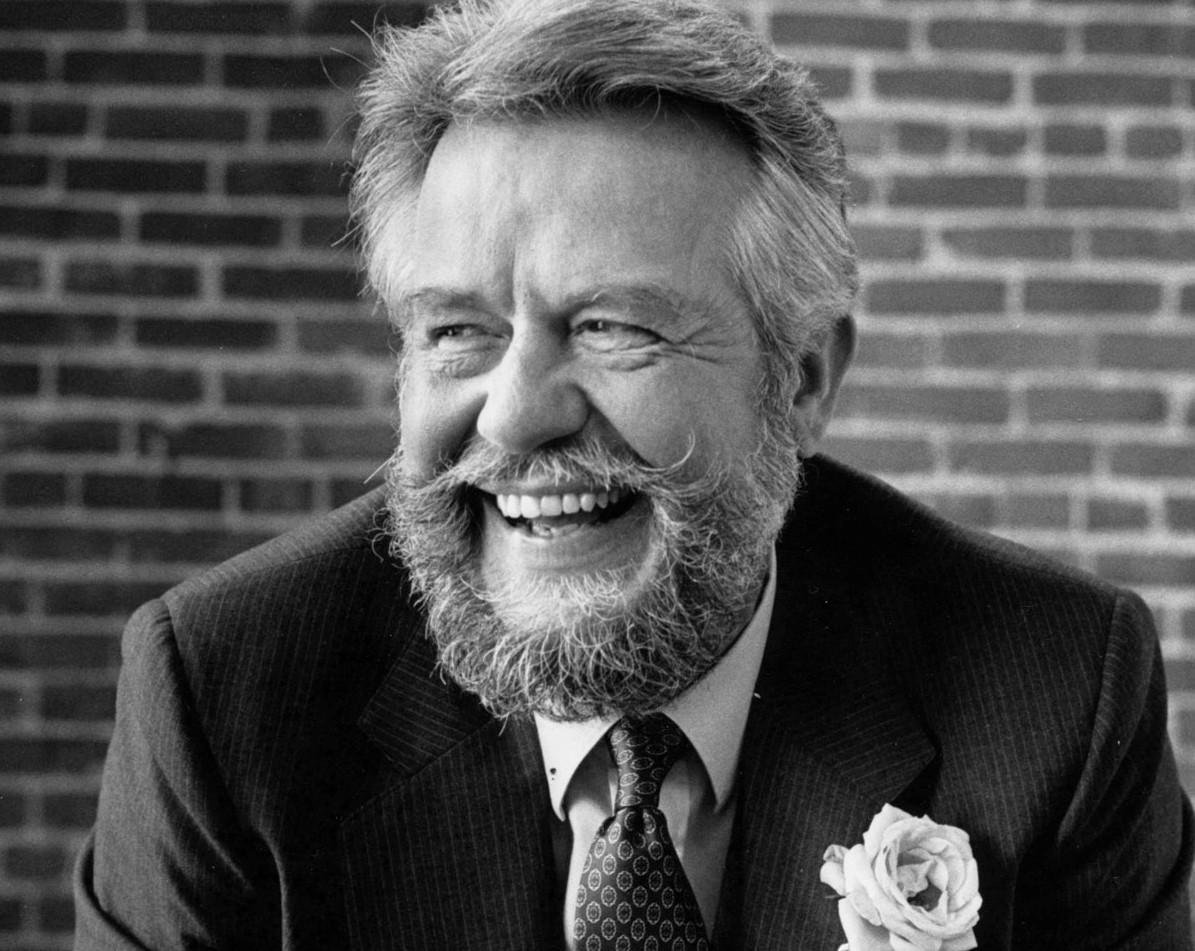
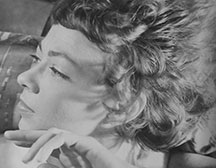
![Photo of Prof. Marvin Levich [philosophy 1953–94]](https://www.reed.edu/reed-magazine/in-memoriam/assets/images/2022/LTL-levich1.jpg)
![Photo of President Paul E. Bragdon [1971–88]](https://www.reed.edu/reed-magazine/in-memoriam/assets/images/2020/Bragdon.jpg)
![Photo of Prof. Edward Barton Segel [history 1973–2011]](https://www.reed.edu/reed-magazine/in-memoriam/assets/images/2020/Segel.jpg)
